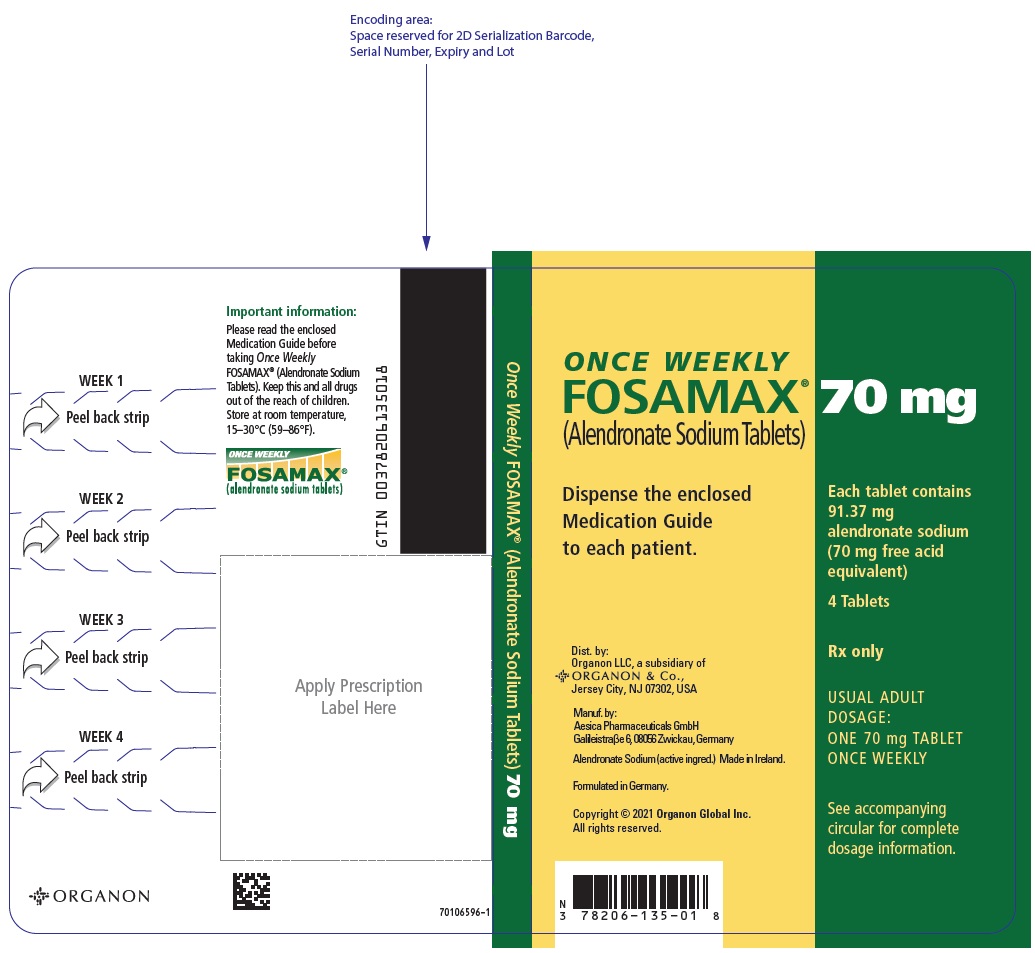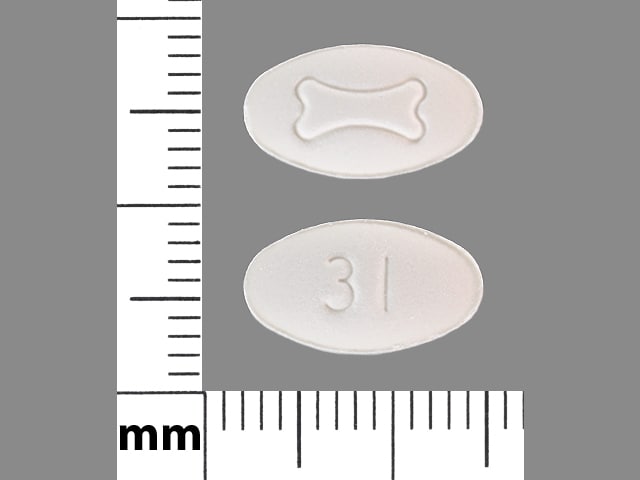Fosamax
Generic name: alendronate
Brand names: Binosto, Fosamax
Drug class: Bisphosphonates
Medically reviewed by A Ras MD.
What is Fosamax?
Fosamax is a prescription medicine used to treat or prevent osteoporosis in women after menopause. It helps reduce the chance of having a hip or spinal fracture (break), increases bone mass in men with osteoporosis.
It is also used to treat osteoporosis in either men or women who are taking corticosteroid medicines, treat certain men and women who have Paget’s disease of the bone.
It is not known how long Fosamax works for the treatment and prevention of osteoporosis. You should see your doctor regularly to determine if Fosamax is still right for you.
Fosamax is not for use in children.
Description
FOSAMAX (alendronate sodium) is a bisphosphonate that acts as a specific inhibitor of osteoclast-mediated bone resorption. Bisphosphonates are synthetic analogs of pyrophosphate that bind to the hydroxyapatite found in bone.
Alendronate sodium is chemically described as (4-amino-1-hydroxybutylidene) bisphosphonic acid monosodium salt trihydrate.
The empirical formula of alendronate sodium is C4H12NNaO7P2•3H2O and its formula weight is 325.12. The structural formula is:

Alendronate sodium is a white, crystalline, nonhygroscopic powder. It is soluble in water, very slightly soluble in alcohol, and practically insoluble in chloroform.
FOSAMAX tablets for oral administration contain 91.37 mg of alendronate monosodium salt trihydrate, which is the molar equivalent of 70 mg of free acid, and the following inactive ingredients: microcrystalline cellulose, anhydrous lactose, croscarmellose sodium, and magnesium stearate.
Mechanism of Action
Animal studies have indicated the following mode of action. At the cellular level, alendronate shows preferential localization to sites of bone resorption, specifically under osteoclasts. The osteoclasts adhere normally to the bone surface but lack the ruffled border that is indicative of active resorption. Alendronate does not interfere with osteoclast recruitment or attachment, but it does inhibit osteoclast activity. Studies in mice on the localization of radioactive [3H]alendronate in bone showed about 10-fold higher uptake on osteoclast surfaces than on osteoblast surfaces.
Bones examined 6 and 49 days after [3H]alendronate administration in rats and mice, respectively, showed that normal bone was formed on top of the alendronate, which was incorporated inside the matrix. While incorporated in bone matrix, alendronate is not pharmacologically active. Thus, alendronate must be continuously administered to suppress osteoclasts on newly formed resorption surfaces. Histomorphometry in baboons and rats showed that alendronate treatment reduces bone turnover (i.e., the number of sites at which bone is remodeled). In addition, bone formation exceeds bone resorption at these remodeling sites, leading to progressive gains in bone mass.
What is the most important information I should know about Fosamax?
Fosamax can cause serious side effects including:
- Esophagus problems
- Low calcium levels in your blood (hypocalcemia)
- Bone, joint, or muscle pain
- Severe jaw bone problems (osteonecrosis)
- Unusual thigh bone fractures
1. Esophagus problems
Some people who take Fosamax may develop problems in the esophagus (the tube that connects the mouth and the stomach). These problems include irritation, inflammation, or ulcers of the esophagus which may sometimes bleed.
- It is important that you take Fosamax exactly as prescribed to help lower your chance of getting esophagus problems. (See the section “How should I take Fosamax?”)
- Stop taking Fosamax and call your doctor right away if you get chest pain, new or worsening heartburn, or have trouble or pain when you swallow.
2. Low calcium levels in your blood (hypocalcemia)
Fosamax may lower the calcium levels in your blood. If you have low blood calcium before you start taking Fosamax, it may get worse during treatment. Your low blood calcium must be treated before you take Fosamax. Most people with low blood calcium levels do not have symptoms, but some people may have symptoms. Call your doctor right away if you have symptoms of low blood calcium such as:
- Spasms, twitches, or cramps in your muscles
- Numbness or tingling in your fingers, toes, or around your mouth
Your doctor may prescribe calcium and vitamin D to help prevent low calcium levels in your blood, while you take Fosamax. Take calcium and vitamin D as your doctor tells you to.
3. Bone, joint, or muscle pain
Some people who take Fosamax develop severe bone, joint, or muscle pain.
4. Severe jaw bone problems (osteonecrosis)
Severe jaw bone problems may happen when you take Fosamax. Your doctor should examine your mouth before you start Fosamax. Your doctor may tell you to see your dentist before you start Fosamax. It is important for you to practice good mouth care during treatment with Fosamax.
5. Unusual thigh bone fractures
Some people have developed unusual fractures in their thigh bone. Symptoms of a fracture may include new or unusual pain in your hip, groin, or thigh.
Call your doctor right away if you have any of these side effects.
Who should not take Fosamax?
Do not take Fosamax if you:
- Have certain problems with your esophagus, the tube that connects your mouth with your stomach
- Cannot stand or sit upright for at least 30 minutes
- Have low levels of calcium in your blood
- Are allergic to Fosamax or any of its ingredients. A list of ingredients is at the end of this leaflet.
What should I tell my healthcare provider before taking Fosamax?
Before you start Fosamax, be sure to talk to your doctor if you:
- Have problems with swallowing
- Have stomach or digestive problems
- Have low blood calcium
- Plan to have dental surgery or teeth removed
- Have kidney problems
- Have been told you have trouble absorbing minerals in your stomach or intestines (malabsorption syndrome)
- Are pregnant, trying to become pregnant or suspect that you are pregnant. If you become pregnant while taking Fosamax, stop taking it and contact your doctor. It is not known if Fosamax can harm your unborn baby.
- Are breast-feeding or plan to breast-feed. It is not known if Fosamax passes into your milk and may harm your baby.
Especially tell your doctor if you take:
- antacids
- aspirin
- Nonsteroidal Anti-Inflammatory (NSAID) medicines
Tell your doctor about all the medicines you take, including prescription and non-prescription medicines, vitamins, and herbal supplements. Certain medicines may affect how Fosamax works.
Know the medicines you take. Keep a list of them and show it to your doctor and pharmacist each time you get a new medicine.
How should I take Fosamax?
- Take Fosamax exactly as your doctor tells you.
- Fosamax works only if taken on an empty stomach.
- Take Fosamax, after you get up for the day and before taking your first food, drink, or other medicine.
- Take Fosamax while you are sitting or standing.
- Do not chew or suck on a tablet of Fosamax.
- Swallow Fosamax tablet with a full glass (6-8 oz) of plain water only.
- Do not take Fosamax with mineral water, coffee, tea, soda, or juice.
- If you take Fosamax Daily:
- Take 1 Fosamax tablet one time a day, every day after you get up for the day and before taking your first food, drink, or other medicine.
- If you take Once Weekly Fosamax:
- Choose the day of the week that best fits your schedule.
- Take 1 dose of Fosamax every week on your chosen day after you get up for the day and before taking your first food, drink, or other medicine.
After swallowing Fosamax tablet, wait at least 30 minutes:
- Before you lie down. You may sit, stand or walk, and do normal activities like reading.
- Before you take your first food or drink except for plain water.
- Before you take other medicines, including antacids, calcium, and other supplements and vitamins.
Do not lie down for at least 30 minutes after you take Fosamax and after you eat your first food of the day.
If you miss a dose of Fosamax, do not take it later in the day. Take your missed dose on the next morning after you remember and then return to your normal schedule. Do not take 2 doses on the same day.
If you take too much Fosamax, call your doctor. Do not try to vomit. Do not lie down.
What are the possible side effects of Fosamax?
Fosamax may cause serious side effects.
- See “What is the most important information I should know about Fosamax?”.
The most common side effects of Fosamax are:
- Stomach area (abdominal) pain
- Heartburn
- Constipation
- Diarrhea
- Upset stomach
- Pain in your bones, joints, or muscles
- Nausea
You may get allergic reactions, such as hives or swelling of your face, lips, tongue, or throat.
Worsening of asthma has been reported.
Tell your doctor if you have any side effect that bothers you or that does not go away.
These are not all the possible side effects of Fosamax. For more information, ask your doctor or pharmacist.
Call your doctor for medical advice about side effects. You may report side effects to FDA at 1-800-FDA-1088.
General information about the safe and effective use of Fosamax.
Medicines are sometimes prescribed for purposes other than those listed in a Medication Guide. Do not use Fosamax for a condition for which it was not prescribed. Do not give Fosamax to other people, even if they have the same symptoms you have. It may harm them.
This Medication Guide summarizes the most important information about Fosamax. If you would like more information, talk with your doctor. You can ask your doctor or pharmacist for information about Fosamax that is written for health professionals. For more information, go to the Merck Product List A-Z or call 1-800-622-4477 (toll-free).
How do I store Fosamax?
- Store Fosamax at room temperature, 59°F to 86°F (15°C to 30°C).
- Keep Fosamax in a tightly closed container.
Keep Fosamax and all medicines out of the reach of children.
What are the ingredients in Fosamax?
Active ingredient: alendronate sodium
Inactive ingredients: microcrystalline cellulose, anhydrous lactose, croscarmellose sodium, magnesium stearate.
Label
PRINCIPAL DISPLAY PANEL – 4 TABLET BLISTER PACK
- ONCE WEEKLY
FOSAMAX® 70 mg
(Alendronate SodiumTablets) - Dispense the enclosed
Medication Guide
to each patient. - Each tablet contains
91.37 mg
alendronate sodium
(70 mg free acid
equivalent) - 4 Tablets
- Rx only
- USUAL ADULT
DOSAGE:
ONE 70 mg TABLET
ONCE WEEKLY - See accompanying
circular for complete
dosage information. - Dist. by:
Organon LLC, a subsidiary of
ORGANON & Co.,
Jersey City, NJ 07302, USA - Manuf. by:
Aesica Pharmaceuticals GmbH
Galileistraβe 6, 08056 Zwickau, Germany - Alendronate Sodium(active ingred.) Made in Ireland.
- Formulated in Germany.
- Copyright © 2021 Organon Global Inc.
All rights reserved.


